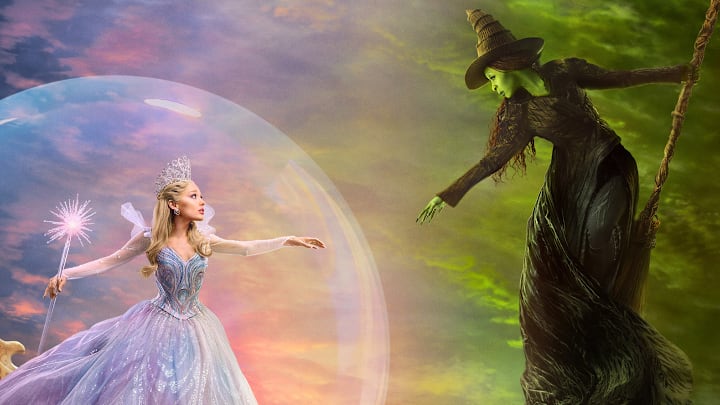This article contains SPOILERS for Wicked: For Good.
The choice to split the iconic stage-play Wicked into two films was contentious from the start. In a media landscape that is looking to serialize and franchise everything it can get its hands on, the idea of splitting the two-hour-and-forty-five minute play into two different two-and-a-half-hour movies caused more than a few people to look skeptically upon the decision.
This feeling was exacerbated all the more by the differing opinions on the first and second halves of the play itself. When people think Wicked, they think “Popular,” “Dancing Through Life,” and especially, “Defying Gravity,” all of which are from the first half. In stark contrast, the second act is something that even the show’s most ardent fans often admit is rushed and kind of nonsensical a lot of the time. So amputating the two acts from one another seemed like an even more questionable choice, as it could ultimately result in simply delaying the dissatisfaction of that lackluster finale.
However, in the lead up to the films, I was cautiously optimistic about all of this. For one, film as a medium requires a greater amount of time in order for things to have resonance. In a stage-play, the people are directly in front of your eyes, in-person, belting out these high-octane emotional songs, and you, as a human being, feel it in your chest. But with a movie, these kinds of big emotions take a bit more time to dig into, so I was generally okay with these longer runtimes so long as they were used well. And in Jon M. Chu’s first film, 2024’s Wicked, the extra time was used pretty effectively. Those three aforementioned iconic musical setpieces from the first act all received extensive glow-ups that really allowed them to stick the landing cinematically.
As such, after that first film, I was even kind of hopeful that Chu and company would find ways to assuage Act Two’s more disparate parts into something workable. So imagine my dismay upon seeing Wicked: For Good and realizing that very much was not the case. In fact, one of the new songs in Wicked: For Good was so bad, I was afraid I might be having a stroke while I was listening to it.
Adding new songs to Wicked: For Good was a baffling choice
In the first film, there were no new songs; simply all of the ones that were present in the original Act One of the stage production. However, Act Two of the stage-play is actually shorter than Act One, and features less songs. As a result, the team behind Wicked: For Good and original composer Stephen Schwartz decided to add two new songs that were specifically made for the film; “No Place Like Home” for Cynthia Erivo’s Elphaba and “The Girl in the Bubble” for Ariana Grande’s Glinda. Neither of these is much of anything to write home about, with both of them providing lackluster musical thrills and doing little to enhance, change, or even propel the story at hand. However, while “No Place Like Home” does at least have good intentions and is well-executed on a cinematic front, “The Girl in the Bubble” takes a great vocal performance by Grande and turns it into one of the single most baffling moment of the entire film.
For starters, the song brings the narrative and themes of the actual story screeching to a halt like nothing else in the movie. Glinda sees a mob assembling to go kill Elphaba, and clearly feels that she needs to take action to stop it; all of which is pretty clearly telegraphed by the combination of the musical score and Grande’s performance. However, she then turns, walks back inside her apartment and mournfully contemplates things for this dirge of a song, which culminates with her deciding for what feels like the half-dozenth time in the film to take ownership of her own abilities. Then, the film immediately cuts to her storming in to confront Madame Morrible about the mob, something that would have felt much more natural if the song had simply been excised from the film altogether.
But furthermore, for absolutely inexplicable reasons, Chu and his team elected to film the entirety of “The Girl in the Bubble,” a musical number which sees Glinda wandering melancholically around her Oz-based apartment, entirely in shots that push toward, digitally phase through, and then come out the other side of mirrors. The whole three-minute-and-forty-second duration of the song is captured with this exact same camera movement, over and over and over again, utilizing different mirrors around the apartment. One of these shots in a song that is this overtly and bluntly reflective for a character would be on-the-nose, but utilizing only this shot for the whole thing is utterly deranged. It drains the song, performance, and sequence of any emotional resonance and turns it into a grating, painful watch on every front.
The combination of the song itself being fairly banal, its failure to serve any kind of purpose within the larger context of the story being told, and the absolutely bananas visual approach all make for a genuinely out-of-body experience, one that left me questioning after the fact if I had actually seen that or just had some deranged fever dream.
But no, “The Girl in the Bubble” scene does most assuredly exist, and it is one of the worst parts of Wicked: For Good.
